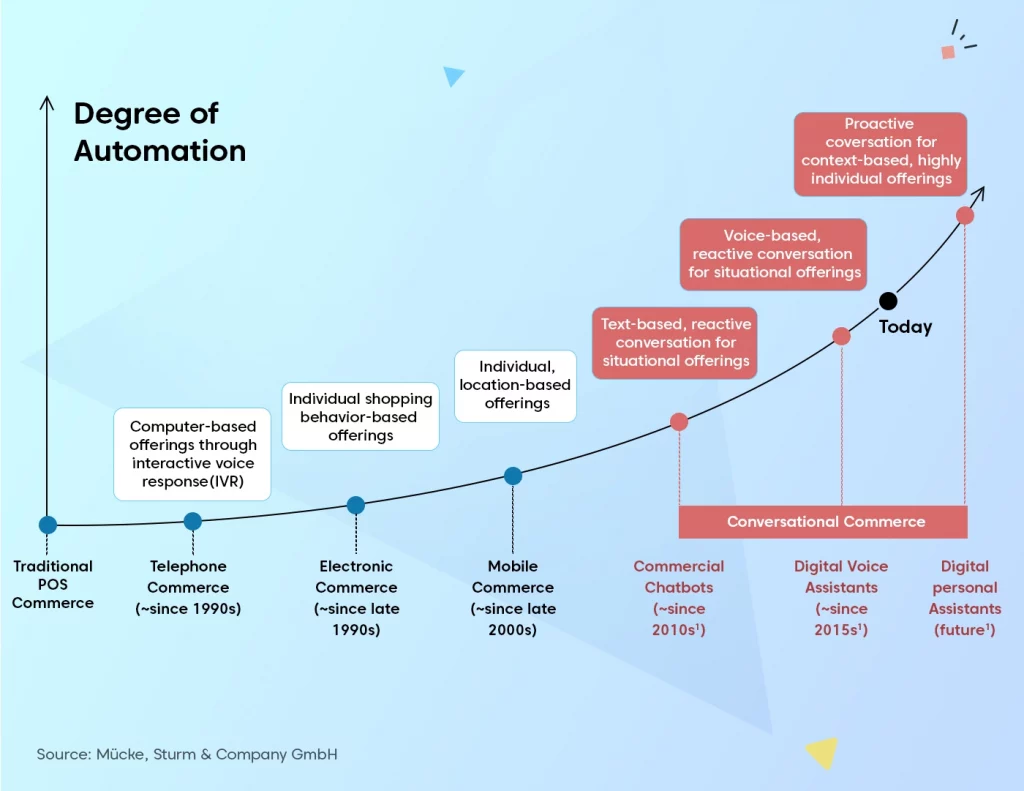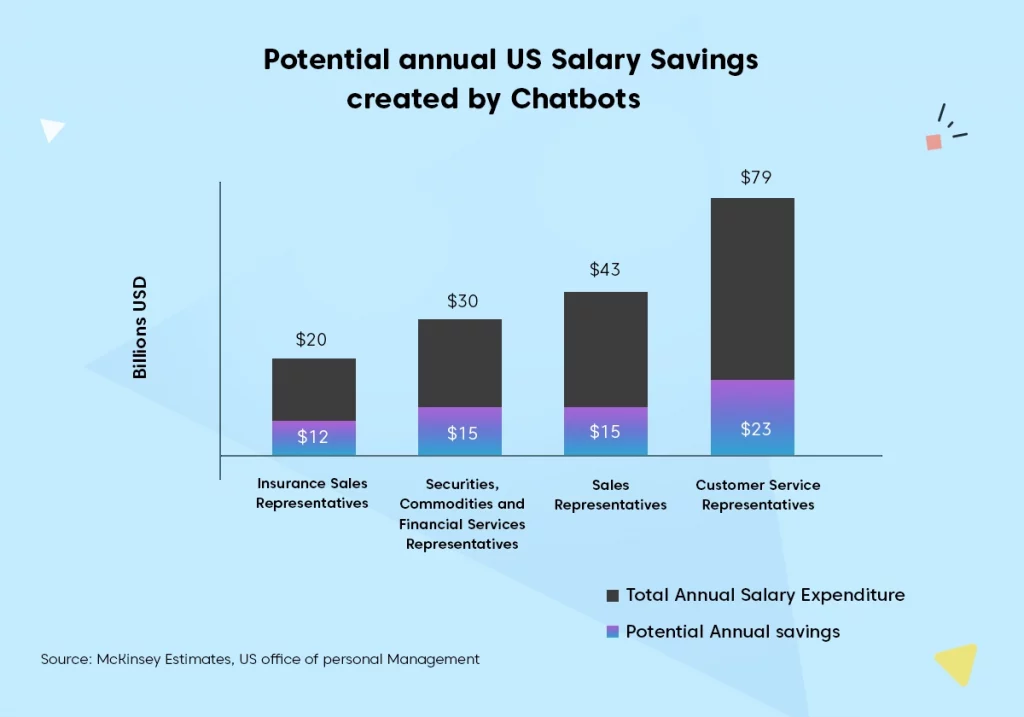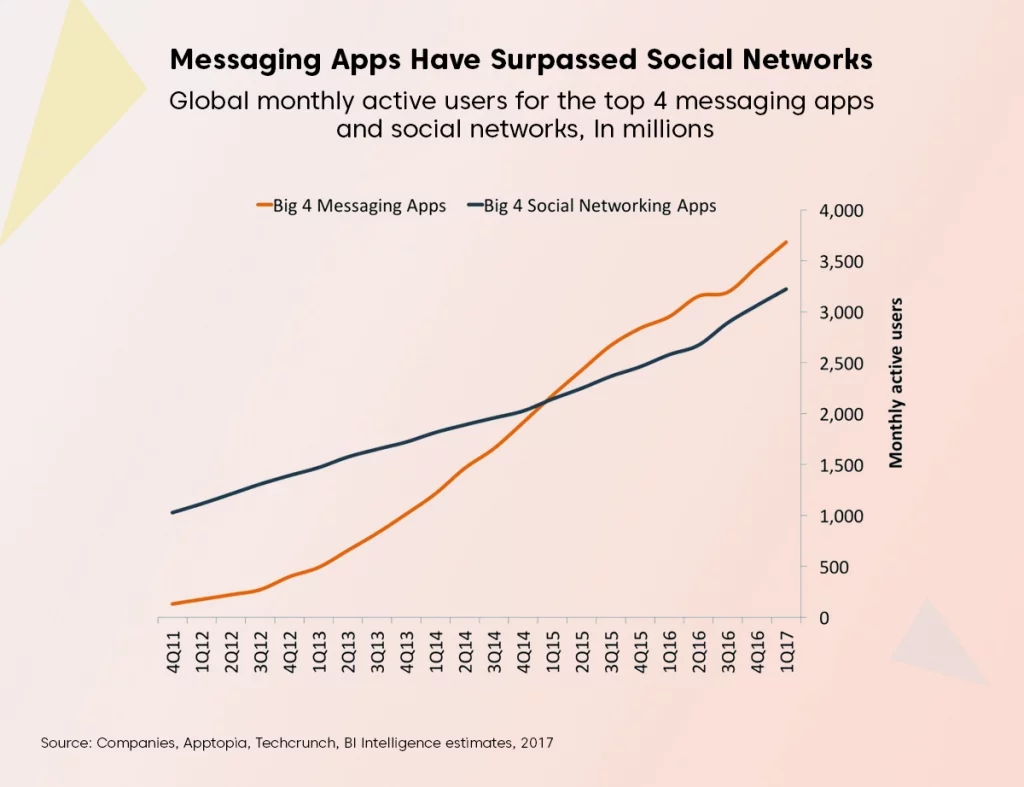The rapid shift towards a digital-first world has conditioned customers to expect on-demand services. Learn how conversational commerce is revamping traditional eCommerce to meet renewed customer expectations.
For virtually every business, staying ahead of new trends is important to stay relevant and excel in this volatile world. One such trend, permeating global eCommerce, is conversation.
With the rise in messaging apps and voice assistants such as Alexa, Siri, Google Assistant and more, customers have become accustomed to everything on-demand. Infact, 86% of customers expect a more convenient, proactive and personalized experience, when interacting with businesses online. And this is something that conversational commerce or c-commerce can easily achieve.
What is conversational commerce?
If there is one thing that traditional eCommerce lacks, it’s the online equivalent of the helpful store associate. According to a recent survey by Tulip Retail, 79% of customers say that engaging with a knowledgeable store associate is “important” or “very important”. This is where the role of c-commerce comes in.
Conversational commerce is when brands make use of technology such as live chat, chatbots and voicebots to sell products and services. It’s a two-way street that enables customers to interact with merchants in real time and provides companies with a one-to-one sales channel.
No doubt why it’s emerging as a way for brands to add a human touch to their online sales strategies while customers react positively to the experience.
Recent research even shows that customers from all age groups prefer the assistance of a chatbot to make an online purchase. Also, 65% customers feel comfortable with the self-serve feature of c-commerce. That allows them to self-resolve issues with the help of conversational ai.

5 benefits of conversational commerce platform
1. Better customer service
The key to customer retention is excellent customer service. By focusing on giving customers what they want, companies can truly enhance their overall customer experience. Having said that, customers today demand to connect with a brand across multiple channels.
With the help of conversational commerce solutions, businesses can unlock a seamless omnichannel experience to improve customer loyalty, drive sales and revenue.
2. Time and cost-effective

Modern customers are always on-the-go and hardly have time to stay on hold or wait for a response. On the other hand, businesses spend over $1.3 trillion every year to proactively respond to customer requests.
With the help of conversational AI, businesses can reduce their customer service costs by up to 30% and customers will be able to get quicker and more consistent service.
3. More personalised CX
Customer service is all about convenience. Providing personalized suggestions to the customers can reduce the time they spend searching for a suitable product.
A c-commerce solution with the help of technologies such as natural language processing (NLP) and customer intent recognition can help chatbots understand customer behaviour to make relevant recommendations.
4. Improved conversion rate
Businesses spend a lot of money to get customers on their website, but what happens once the customers arrive? Will they be supported every step of the way by an intelligent AI assistant or left to scramble their way through the website? Well, the former option is the better way to go.
By using the right c-commerce strategy, businesses can increase their conversion rates significantly. Even without having the most-optimized website.
5. Reduction in cart abandonment rates

Cart abandonment implies that a customer added products to the cart but left the website without making the payment. There can be multiple reasons for cart abandonment like forced account creation, long delivery times, hidden costs, etc.
That’s where chatbots can play an important role. Chatbots can reduce cart abandonment by 20-30%. They can follow up with hesitant customers regarding their abandoned carts and encourage them with offers and discounts to complete their purchase.
From resolving queries, sending in-app notifications, to engaging users by providing a personalized shopping experience, c-commerce tools can help you get those final conversions
3 Use cases of Conversational commerce

Customers today are always on-the-go. Research shows that 46% of eCommerce customers drop off because of unanswered FAQs. With so much competition in the market, businesses can’t afford to make customers wait to get their queries resolved. Here is how eCommerce businesses can use conversational commerce to improve user experience.
1. Product discovery and recommendations
It can get tedious for customers to choose the right product from the endless listings on an eCommerce site. With conversational commerce bots, you can help customers to make the right choice.
For instance, you are an insurance provider and a customer asks you for policy recommendations. Your NLP powered insurance chatbot will do all the work for you. It will gather the required information and documents from the prospect and present them with all the relevant recommendations to choose from. All without the intervention of a human agent.
This, in turn, narrows down the choices for the customers and they can make their decision in much less time. Conversational AI with sales functionality can help bring in more direct sales, as customers buy directly from the chatbot interface.
2. Pre and post-sales support
Pre-sales support is all about making sure that the customer completes the purchase without any hassle. Post-sales support is just as important.
Once the customer has bought a product from your eCommerce site, they may want to return/exchange it, leave a review about it or inquire about the status of delivery. With the help of in-app notifications, live chat and voice or chatbots, you can keep customers engaged and achieve their loyalty.
3. Omnichannel integration
Today, 1.3 billion people are using Facebook messenger and more than 2 billion people use Whatsapp worldwide. This provides an opportunity for brands to meet customers where they are.
Just like Leo Coffee, one of the most popular coffee brands in India expanded sales of its delicious coffee blends with the help of Leo – The Intelligent Virtual Assistant.
Yellow.ai helped Leo Coffee by deploying an interactive UI bot across multiple channels like Facebook, WhatsApp, and Leo e-store. This intelligent virtual assistant helps customers choose the right blend according to their preferences and helps them subscribe and order the pure blends, right from the bot interface.
The bot is able to provide 24/7 support to its customers, with an amazing 100% accuracy in query resolution.
Types of conversational commerce
By now you’re already aware of how conversational commerce can make a difference for your CX strategy. Now, let’s have a look at different types of c-commerce tools that you can deploy for your eCommerce business.
1. Live Chat
Live chat is one of the most popular and preferred communication channels. Customers use the live chat feature to instantly interact with a support agent in case of a query.
Customer service agents can attend 2-3 different customers over live chat simultaneously. And to avoid making customers wait, chatbots can be used to collect basic information from customers and later pass the lead on to human agents.

2. Chatbots
Chatbots resolve customers’ questions over text messages. With the rising popularity of messaging apps, chatbots are emerging to be modern customers’ go-to mode of interaction with a brand.

Chatbots deployed on WhatsApp business or Facebook Messenger enable customers to easily inquire about the status of their order, book an appointment, make payment, get location of the nearest store, and more within just a few clicks.
3. Voice assistants
“Alexa. Book an appointment for the dentist today.”
Yes, that’s how easy it is these days to book an appointment. Not only this, virtual assistants such as Alexa, Siri, Google Assistant, etc are capable of so much more.
Using voice assistants in your marketing and customer service strategies can help you boost your brand awareness. They are convenient, they are fun and most of all, they save your customer’s time.
How can brands adopt conversational commerce?
The future of conversational commerce looks promising. Both the customers and businesses are bound to benefit from the adoption of c-commerce. To help you get started, here are 4 steps to adopt AI conversational commerce for your online business.
1. Pick an achievable goal
Identify a business goal or a challenge that you want to resolve with the help of conversational ai. For instance if your goal is to enhance customer loyalty, you might want to provide friction-less, real-time support to your customers.
Whereas, if your purpose is lead generation, deploying chatbots on Whatsapp business or Facebook Messenger can be the way to go.
2. Do immense research
The best way to come up with the perfect c-commerce strategy is to analyze your customers’ pain points. Once you identify what’s driving your customers away or what’s important for them, you will be able to make the right decisions.
For example, 12% of Americans rate their number one problem with customer service as lack of speed. If your customers face the same problem, you can use conversational AI to resolve customers’ queries quickly and efficiently.
3. Choose the right technology partner
Conversational commerce is not just about deploying bots, it’s about a wider conversational strategy that will allow your business to create more meaningful customer experience. You will need a technology partner with the right platform, industry expertise and knowledge to be able to turn your business goals into reality.
Yellow.ai is the world’s leading conversational CX platform, recognized by Gartner & G2, that can help you make a smooth transition towards conversational commerce by deploying conversational virtual assistants, across text and voice, for faster conversions, improved customer satisfaction and loyalty. Get in touch with our experts to kickstart your automation journey today.
4. Launch, measure and optimize
When you’re ready to deploy your conversational commerce tools, it’s important to decide what your key performance indicators (KPIs) are. Your KPIs will help you monitor your growth, measure your performance and optimize shortcomings.
Some great examples of KPIs are customer satisfaction score (CSAT), conversion rate or cart abandonment rate. You can determine your KPIs based on your specific business goals.



















